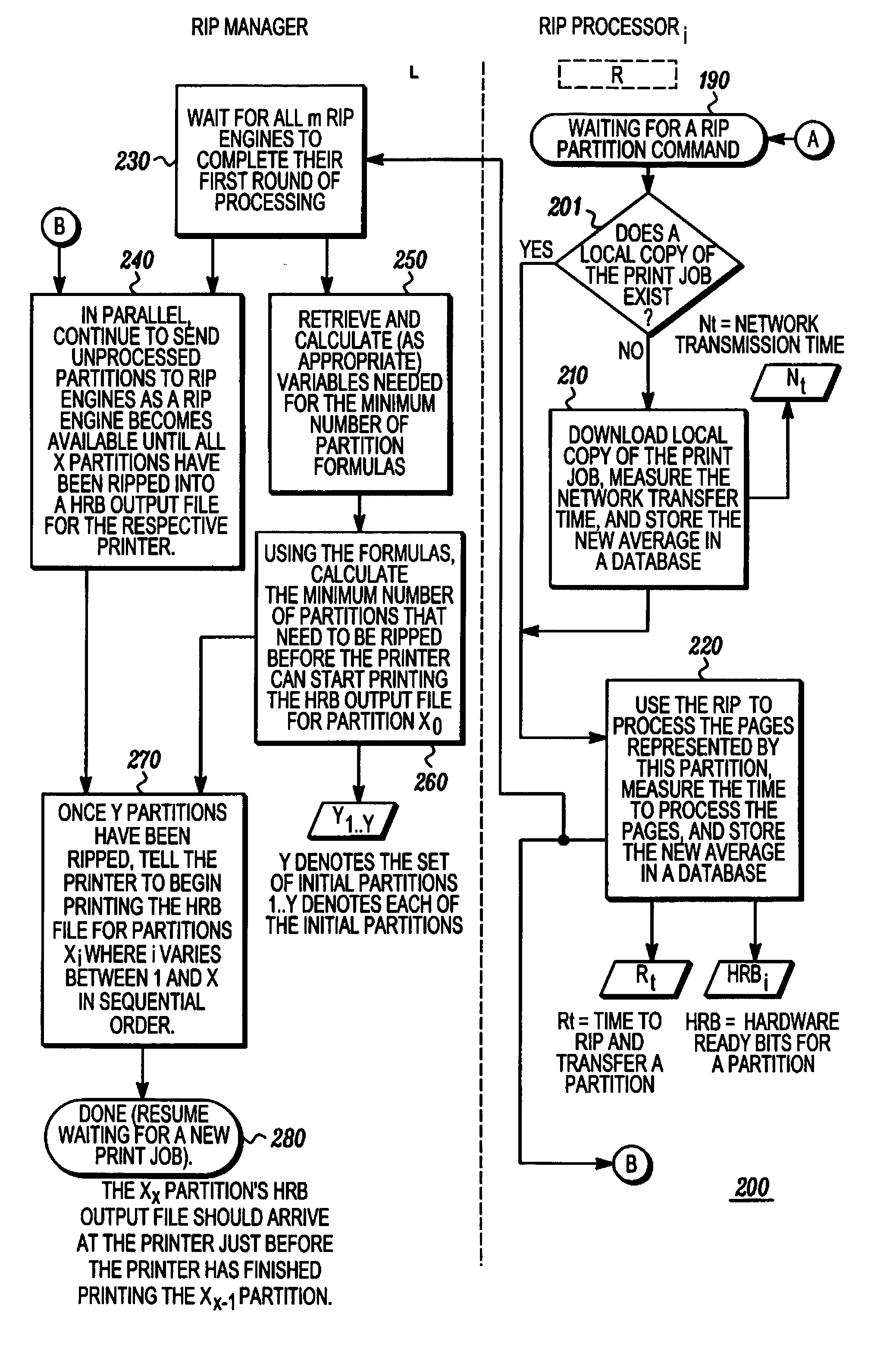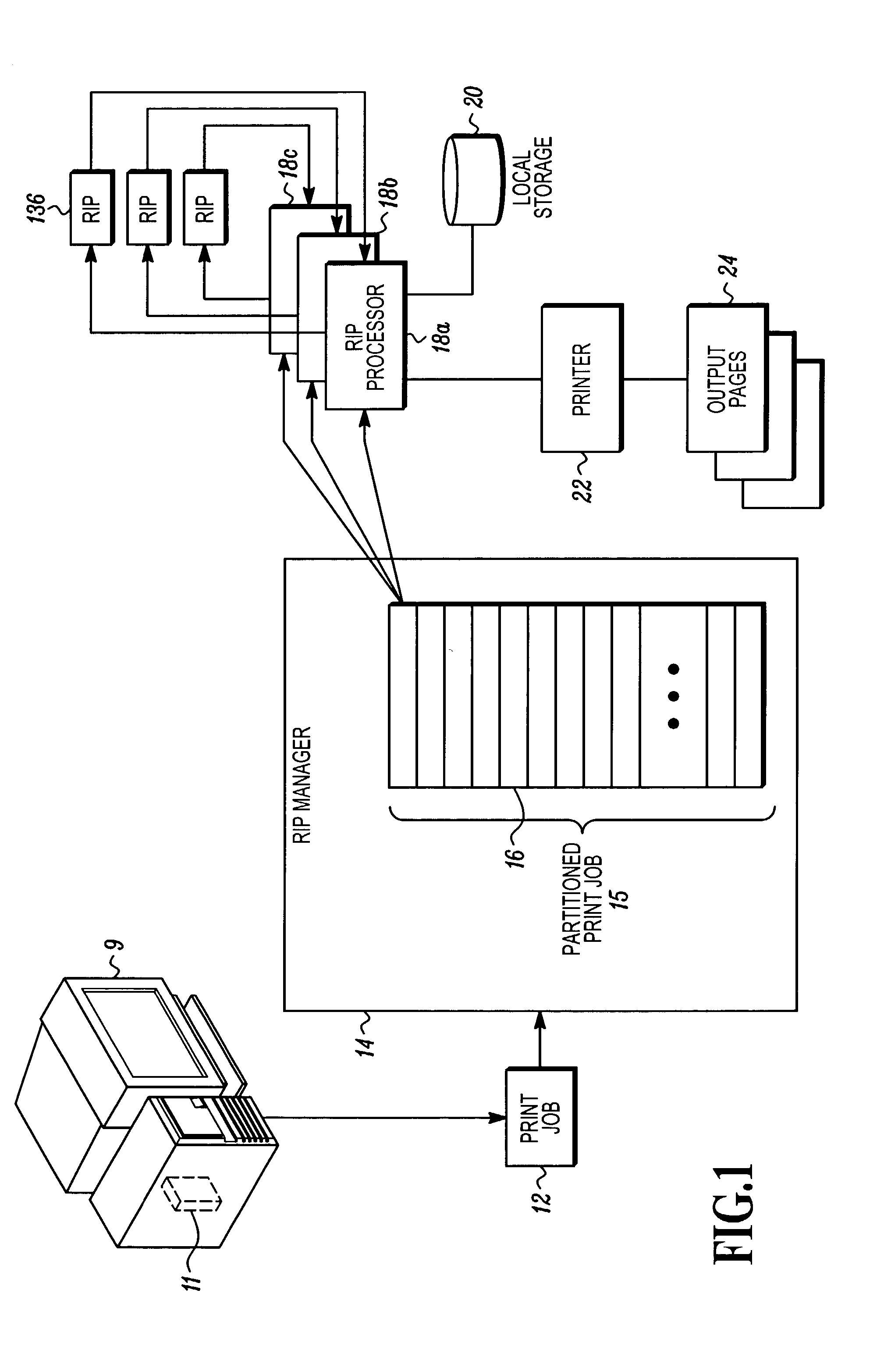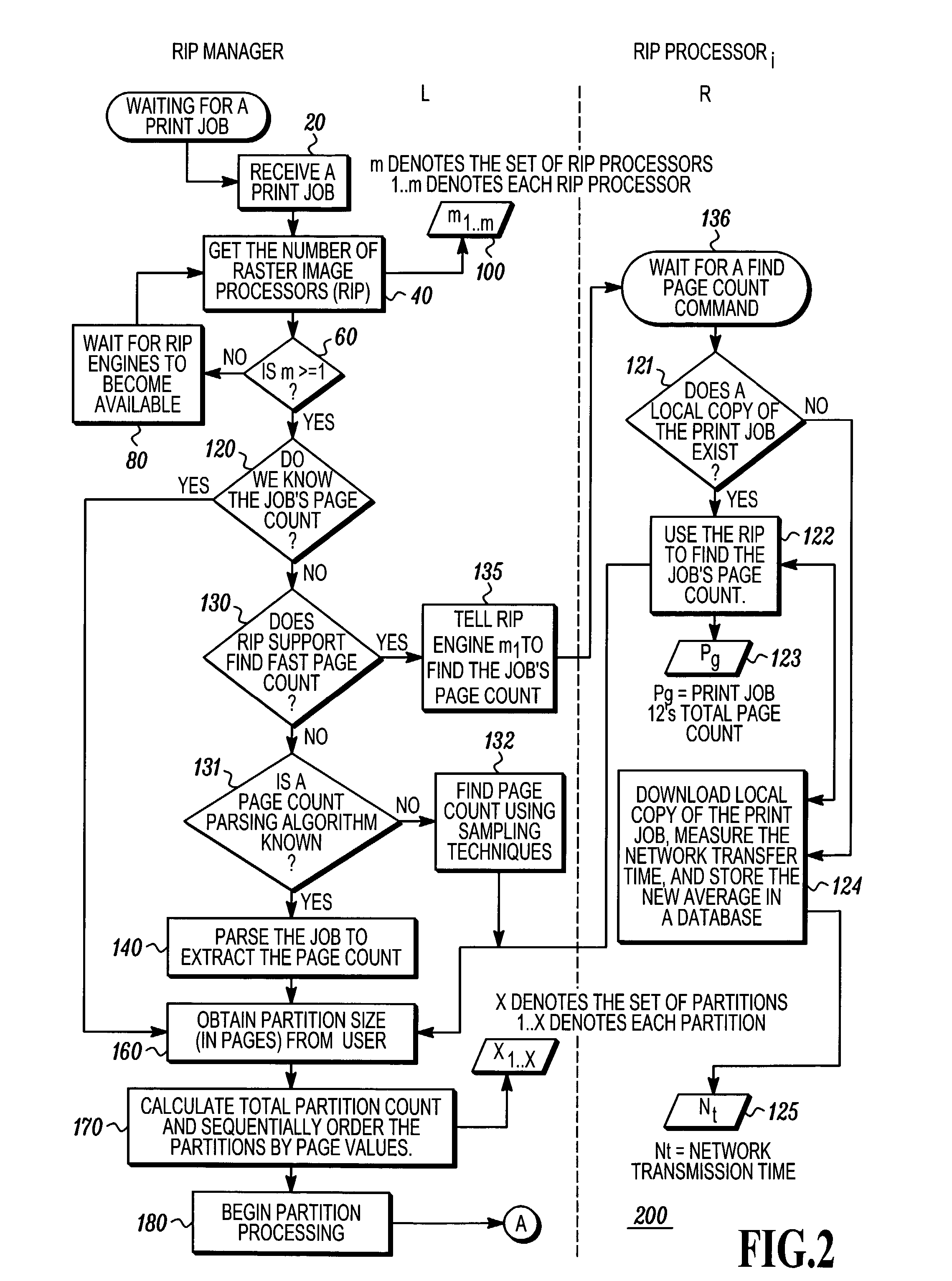Determining raster image processor cycle count to fully utilize a printer
a raster image processor and cycle count technology, applied in the field of printing system, can solve the problems of reducing the rate at which data can be transferred, reducing the printing rate of output pages, and the host processor thereafter suffering a performance degradation
- Summary
- Abstract
- Description
- Claims
- Application Information
AI Technical Summary
Problems solved by technology
Method used
Image
Examples
Embodiment Construction
[0015]As shown in the accompanying drawings, the present invention is embodied in a method and apparatus which determines on a job-by-job basis, or on a page-by-page basis, the minimum number of raster image processor (RIP) cycles to be completed by one or more raster image processors prior to actually starting a printing operation in order to keep a printer running continuously (or nearly continuously) for the duration of a print job. A “RIP cycle” is considered to be the time required for one or more raster image processors to convert at least part of an entire print file, (e.g., a PDF file) into hardware ready bits (HRBs) needed by the printer to print a single page of the file. In many commercial printing devices, once a printer or printer press starts to work on a job, hardware ready data bits need to be made continuously available to the printer until the entire print job has completed printing. A printer or printing press “starves” (and must be stopped) when hardware ready bi...
PUM
 Login to View More
Login to View More Abstract
Description
Claims
Application Information
 Login to View More
Login to View More - R&D
- Intellectual Property
- Life Sciences
- Materials
- Tech Scout
- Unparalleled Data Quality
- Higher Quality Content
- 60% Fewer Hallucinations
Browse by: Latest US Patents, China's latest patents, Technical Efficacy Thesaurus, Application Domain, Technology Topic, Popular Technical Reports.
© 2025 PatSnap. All rights reserved.Legal|Privacy policy|Modern Slavery Act Transparency Statement|Sitemap|About US| Contact US: help@patsnap.com



